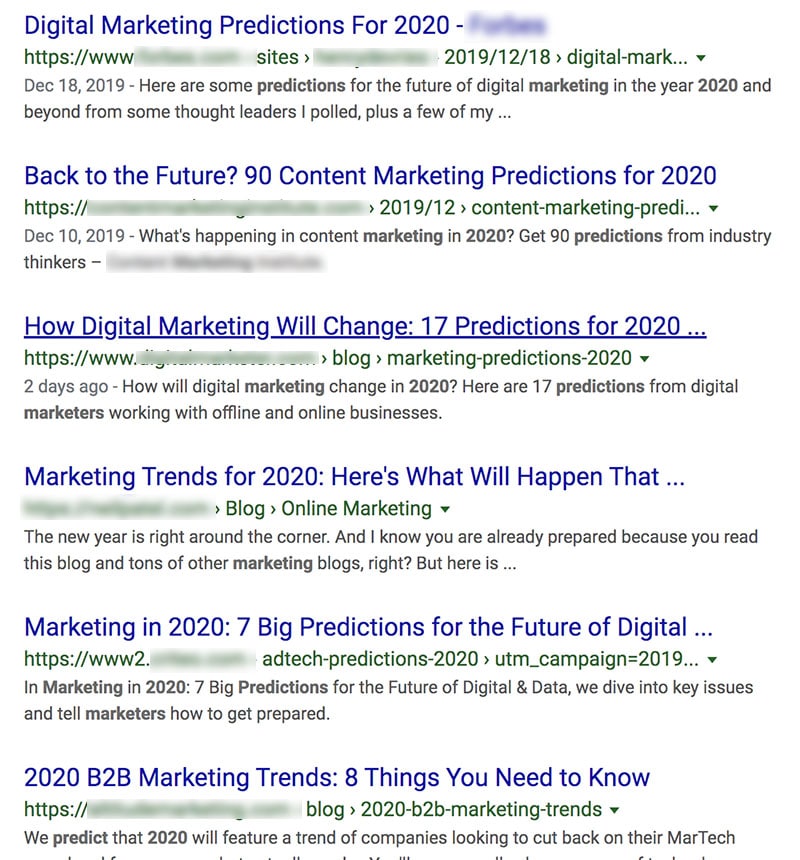As usual, the buildup to 2020 featured dozens of obligatory articles from pundits who gaze into crystal balls to foretell our marketing future. Over my 40-year marketing career, I’ve learned from experience that bite-sized, futurist generalizations in any medium often fail to provide the essential information required to survive and thrive.
Sure, the next hot channel, automated techniques, platform evolution, super computing hacks, staffing trends, and other futurist fare can be illuminating – if not mildly entertaining. However, year after year, what matters more to actually going about the business of being an evolutionary marketer are timeless precepts”realities that seem to rarely change.
While AIMCLEAR is reputed to have helped define the cutting edge for over a decade, our agency’s practice is actually built on a foundation of classic marketing values. So rather than piling on predictions and blurring truisms to form click-bait cliché fodder, here we highlight timeless dictums we’ve held firm as true north. We hope you enjoy the perspective and Happy New Year!
Coherent, vertical, sequenced, and integrated creative tendered to appropriate target audiences wins: Marketing is rather simple, an offshoot of the elevator speech. To reach a conversion objective, we are called to communicate true messages, at appropriate times, in an intelligible order, to segmented audiences. Of all the feedback I typically provide to our team, a common theme is about encouraging our marketers to sequence clear, vertical creative.
The definition of “Creative” expands to include new channels, content variants, sources and mediums: Ask a group of marketers what “Creative” means and you’re likely to get a number of unique answers. To AIMCLEAR, any time we use words, images, videos, sound, and music, long or short form, organic, or paid – we are talking about “Creative.” For instance, witness the emergence of TikTok, a somewhat new online user-generated creative community. While it’s easy to get caught up in the newness of the latest emergent channel, it’s most important to remember there is always a new channel right around the corner. What we say to who in the channel and for what purpose is most important.
The coolest marketers are channel agnostic, able to thrive in any generation for their very guile: I am not a Facebook expert who does marketing. I’m a marketer that uses Facebook- the channel – among many others. Google is not a strategy. It too is a channel. Knowing what to DO with a channel in the now, and knowing how to leverage channel opportunities for the betterment of marketing, are much more important than the channels themselves. Sure, MySpace is way dead. AND, we used that channel to make boatloads of money for brands in the day. Then we abandoned MySpace like a hot potato and moved on to the next channel. Assume every channel has a lifespan in its current form. Be channel agnostic. Use channels for what they’re good for now.
The timeless churn of brands bringing marketers in-house vs. reducing in-house in favor of external partners and hybrid relationships continues to cycle: Legions of marketers who lose brand gigs move on to form consultancies and/or agencies. Marketers at all ability levels bail on consultant and agency life to join brands. Repeat and rinse. We’re talking about a circle of life in marketing, and there are pros and cons to both approaches. The most effective combination continues to manifest when brands engage in true partnerships with marketing agencies and consultants, empowering the brand’s in-house teams via collaboration.
PR can be the most cost efficient channel to lower CPA: Riddle me this: Which marketing channel can drastically lower multichannel CPA overnight? PR can! Do whatever you like with search and social; that Sunday New York Times article or appearance on Good Morning America or even a local TV newscast can send waves of conversion-themed visitors to your site. “If I was down to the last dollar of my marketing budget, I’d spend it on PR!” -Bill Gates
Marketers specializing in siloed platform management are minimized, commoditized, and forced to diversify for survival: There used to be entire departments of marketers who specialized in automating fax machine spam- a dead technology. There are plenty of other examples ranging from door-to-door selling to local newspaper “help wanted” classifieds. These marketing roles have nearly disappeared, giving way to other mediums.
Professionals focused on depreciating mediums are forced to find other channels in which to earn a living. Currently, a similar phenomenon is underway in paid online media, with machines taking over traditionally human roles. As a result, we are seeing a glut in specialized, siloed employees, who are forced to expand their scope to survive, even as salaries are driven lower. If you are a one-channel-trick-pony, expect that your role may be depreciated, challenging you to expand. While it may seem futuristic to predict such things, commoditization of a siloed workforce is the same as it ever was.
Marketing won’t rescue brands from a cataclysmic paradigm shift: Try marketing landline telephones all you want; it probably won’t help attain greater sales. If the climate continues to get warmer, we will ultimately see its affect the sales of warmer clothing. Such a concept is not new. Ask those taxi drivers who wait for 2 hours at LaGuardia for a $20 ride if they think marketing is going to make much of a difference in the ongoing devaluation of their taxi medallion with the rise of ride sharing services. Keeping an awareness of social, industrial, and technological shifts has always been key to marketing success and it always will.
Headlines need not tell the entire story at once: The average human attention span in 2000 was 12 seconds (short). By 2013 it was only 8 seconds (1 second shorter than a goldfish!). For marketers, this forces us to keep things short at the top of the funnel. In actuality, brevity has always been a key feature to successful marketing. In 1963, advertising genius David Ogilvy wrote, “The headline is the ‘ticket on the meat.’ Use it to flag down readers who are prospects for the kind of product you are advertising.” Keep this function in mind and use headlines to get customers in the door.
The best way to make friends is to be friendly: In an age of mechanized gimmicks and bullshit social marketing tactics, the authenticity of a hand truly extended in friendship is never-ending. In marketing and life, don’t ever expect to receive more than you give. “I’ve learned that people will forget what you said, people will forget what you did, but people will never forget how you made them feel.” – Maya Angelou
The best way to be a thought leader is to lead thinking: It always cracks us up when wanna-be niche’-thinkers expect the mantle of thought leadership to be magically bestowed. LOL! Channeling your inner thought-leader is blessed work, based on commitment and unselfish sharing. The pen is mightier than the sword, so write and publish all the time. Take those original ideas, push them further and take to the speaking podium. Find the intersection of genius, art, fanatical drive, and leadership. “That night I will go to my room and write a song about a girl. I will call her Roxanne. I will conjure her unpaid from the street below the hotel and cloak her in the romance and the sadness of Rostand’s play, and her creation will change my life.” Sting, Broken Music.
Embrace personal liabilities, build a kick ass team: Starting AIMCLEAR, I humbly asked each new employee to partner as CO-CEO. I was, and remain, keenly aware of my weaknesses and strengths. In business, as in life, we need to accept authentic and recurrent assessments of which #Beautiful people are prerequisite to help us grow and shine more brightly. In these regards I’ve experienced exhilarating victories and devastating loss. “If each of us hires people who are smaller than we are, we shall become a company of dwarfs. But if each of us hires people who are bigger than we are, we shall become a company of giants.” David Ogilvy
State-of-the art is what you accomplish with what you have: We’ve known marketers with piles more tools, data, flash, and human resources…and WE kicked their gilded butts all over town. Reciprocally, we’ve had our competitive marketing clock cleaned, throttled, and drained by radically underfunded, genius upstart marketers. Go figure. Marketers needing to win with available tools and resources won’t change in 2020.
Same as it ever was
Per usual, the run-up to this new decade included countless requisite articles from experts who stared into the abyss to forecast of our marketing outlook. Over my career, I’ve determined that annual futurist generalities usually don’t provide essential data required to endure and prosper. What matters more in the quest to be a radically modern marketer are these timeless principles”realities to hold that seemingly never change. Happy New Year!










